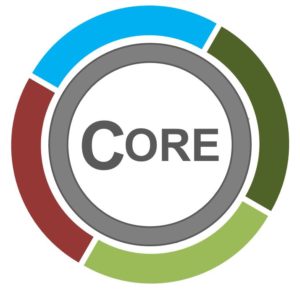
MRTs ensure patient positioning and comfort are addressed in order to provide a safe and successful outcome for diagnostic and therapeutic procedures
Importance of patient comfort
- Many diagnostic and therapeutic procedures require patients to remain immobilized for significant lengths of time.1,2
- Patient comfort is important for the successful delivery of diagnostic examinations and radiation therapy.3
- Generally, the position assumed by the patient should be one that can be maintained for the duration of the procedure
- The ability to maintain a certain position for a period of time is affected by a patient’s level of comfort4,5
- Patient comfort includes both physical and psychological aspects, such as claustrophobia, for some exams and procedures
- Patient motion is a common impediment to diagnostic imaging and radiation therapy6,7, which may result in poor image quality which can lead to repeat procedures, inaccurate treatments, and/or increased exposure to radiation.2,8,9,10
Establishing and maintaining patient comfort
- Continual communication with the patient throughout the procedure is essential.11
- A discussion of the communication (e.g., monitoring system, intercom, call-button, etc.) should take place before the procedure
- Other communication tools such as a verbal countdown can be useful when interacting with patients
- Time taken to assess the patient and ensure their comfort will lead to greater patient compliance with the procedure.3,11
- Continual patient collaboration and reassurance from the MRT throughout the procedure or treatment is an essential way to ensure comfort
- Determine what the limitations of the patient are (e.g., breathing restrictions, other injuries etc.) in order to make modifications if possible
- Patient education and preparation is an important element in gaining patient cooperation and compliance.12
- Patients must be provided the opportunity to ask questions prior to and throughout the procedure or treatment which can alleviate anxiety and provide a rationale behind the required position
- Providing reassurance that the patient can be removed from the equipment at any time, if necessary, may provide some comfort to the patient2
- A combination of different strategies, techniques and aids can be provided to enhance comfort throughout the procedure12,13:
- Ear protection must be provided to reduce the loud noise during MRI procedures4
- An in-bore fan may be used to increase airflow and help regulate temperature (MRI specific)
- Positioning aids, such as straps, pillows, foot holders and foam pads may help the patient remain still and comfortable3,14
- Modified positioning (if appropriate for the study and safe for the patient) can help improve patient comfort and immobility
- Mirrors or prism glasses may be offered to help view surroundings (MRI specific)
- Patients are encouraged to relax during procedures/treatments and music or other narratives may be made available to patients
- Breathing techniques prior to the procedure may help calm the claustrophobic patient
- A familiar person in the room, where safe and appropriate, will often help an anxious patient develop an increased sense of security
- Once immobilized, ensure the patient is ready to proceed. If patient effort is required to maintain the position, movement is more likely.4,5
- Patients may require some form of sedation by the appropriate healthcare provider (e.g., usually physician’s orders) when other techniques and modifications are not successful.7,11,13
References
-
Radiological Society of North America, Inc. Magnetic Resonance Imaging (MRI) – Body. RadiologyInfo.org. May 2016. Available from: https://www.radiologyinfo.org/en/info.cfm?pg=bodymr. [Accessed 11 Dec 2017]
-
Carlsson S, Carlsson E. The situation and the uncertainty about the coming result scared me but interaction with the radiographers helped me through: a qualitative study on patients’ experiences of magnetic resonance imaging examinations. J Clin Nurs. 2013 Nov;22(21-22):3225-34. DOI: 10.1111/jocn.12416
-
Ehrlich RA, Coakes DM. Patient Care in Radiography with an Introduction to Medical Imaging. 9th ed. Elsevier; 2017.
-
Potters L, Kavanagh B, Galvin JM, et al. ASTRO and ACR practice guideline for the performance of stereotactic body radiation therapy. Int J Radiat Oncol Biol Phys. 2010 Feb;76(2):326-332.
-
Sahgal A, Roberge D, Schellenberg D, et al. The Canadian Association of Radiation Oncology scope of practice guidelines for lung, liver and spine stereotactic body radiotherapy. Clin Oncol. 2012 Nov;24(9):629-639. Epub 24 May 2012. DOI: 10.1016/j.clon.2012.04.006.
-
Munn Z, Jordan Z. Interventions to reduce anxiety, distress and the need for sedation in adult patients undergoing magnetic resonance imaging: a systematic review. Int J Evid Based Healthc. 2013 Dec;11(4):265-274. DOI: 10.1111/1744-1609.12045
-
ClinicalTrials.gov. Reduction of Claustrophobia and Patient Motion After Training of MRI Personnel in Comfort Talk. April 2017. Available from: https://clinicaltrials.gov/ct2/show/NCT01563198. [Accessed 16 Apr 2018]
-
Radiological Society of North America, Inc. Computed Tomography (CT) – Body. RadiologyInfo.org. March 2016. Available from: https://www.radiologyinfo.org/en/info.cfm?pg=bodyct. [Accessed 11 Dec 2017]
-
Lampignano JP, Kendrick LE. Bontrager’s Textbook of Radiographic Positioning and Related Anatomy. 9th ed. Elsevier (Mosby); March 2017.
-
Howlin C, O’Shea E, Dunne M, et al. A randomized controlled trial comparing customized versus standard headrests for head and neck radiotherapy immobilization in terms of set-up errors, patient comfort and staff satisfaction (ICORG 08-09). Radiography. 2015 Feb;21(1):74-83.
-
Medicines and Healthcare Products Regulatory Agency (MHRA). Safety Guidelines for Magnetic Resonance Imaging Equipment in Clinical Use. GOV.UK. March 2015. Available from: https://www.gov.uk/government/uploads/system/uploads/attachment_data/file/476931/MRI_guidance_2015_-_4-02d1.pdf. [Accessed 15 Dec 2017]
-
Munn Z, Jordan Z. The Effectiveness of Nonpharmacologic Interventions to Reduce Anxiety and Increase Patient Satisfaction and Comfort during Nuclear Medicine Imaging. JMIRS. 2014 Jan;45(1):47-54.
-
Canadian Association of Medical Radiation Technologists. Claustrophobia. CAMRT, Best Practice Guidelines. Feb 2016. Available from: https://camrt-bpg.ca/patient-management/patient-care/claustrophobia/. [Accessed 19 Apr 2018]
-
Machado JM, Monteiro MS, Vieira VF, et al. Value of a lower-limb immobilization device for optimization of SPECT/CT image fusion. J Nucl Med Technol. 2015 June;43(2):98-102. DOI: 10.2967/jnmt.114.145771.
